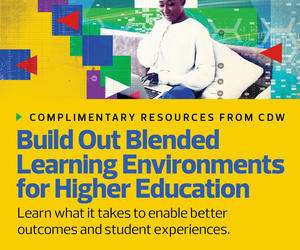Providing Student-Centric Hybrid Experiences
At the beginning of the current academic year, Unity College’s Board of Trustees voted to break away from the traditional residential campus model to focus on a mix of hybrid and online learning opportunities. The persistence of COVID-19 has suspended the in-person components of hybrid learning temporarily, but this was not an issue for us, as we already had a rich distance education curriculum.
To design our five-week courses, a team of full-time instructional designers collaborate with our faculty, deans and other subject matter experts to create technologically sophisticated, interactive online classes. The team works backward from desired learning outcomes to structure curricula. By soliciting student feedback and revising course syllabi as needed, they take a proactive approach to quality assurance.
We employ a wide array of technologies to engage our students while providing maximum flexibility. Our students can record presentations, create websites and produce interactive media in proprietary formats such as ArcGIS, MetaVRse and Amazon Sumerian. We make broad use of tools like WebGL to create browser-based virtual experiences that allow us to blend authentic and simulated experiential learning. And we support access to proprietary software by choosing cloud-based options wherever possible, so that more students have broader access to as many real-world tools as we can provide.












